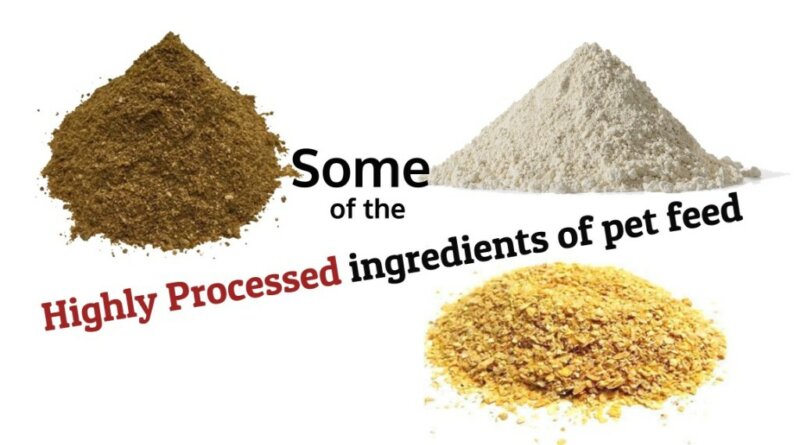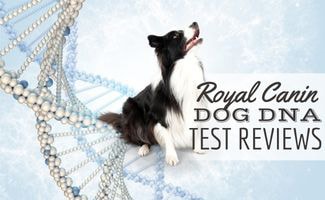Is Ultra Processed Feed Aging Our Pets? – Truth about Pet Food
Research into human nutrition shows ultra processed foods (UPFs) are linked to accelerated cell aging. Are ultra processed pet feed ingredients doing the same to our pets?
The research from University of Navarra in Pamplona, Spain looked into the length of telomeres in an elderly Spanish population. “Telomeres are structures located at the ends of our chromosomes. Although they contain no genetic information themselves, they preserve the integrity of chromosomes by keeping their ends from fraying, much as shoelace tips protect the laces. Telomeres become shorter and less effective over time as chromosomes replicate. Scientists view them as markers of an individual’s biological age at a cellular level.”
The research:
Participants were sorted into “four groups of equal size, or quartiles, according to the number of UPF servings that they consumed daily:
- low: under 2 servings
- medium-low: 2–2.5 servings
- medium-high: 2.5–3 servings
- high: more than 3 servings
The research determined:
In terms of telomeres, Alonso-Pedrero and her colleagues detected a clear correspondence between TL and the consumption of UPFs.
The likelihood of shortened telomeres increased dramatically with the number of UPF servings, starting with the medium-low group. That group was 29% more likely to exhibit reduced TL, while the medium-high group was 40% more likely to do so. Those in the high group were 82% more likely to have shortened telomeres.“
Looking at pet feed…
Processed ingredients in pet feeds include many different things, examples being rendered ingredients (such as chicken meal, by-product meal, and animal fat), vegetable protein ingredients (such as pea protein, corn meal, soybean meal and distillers grains), preservatives (such as BHA or ethoxyquin), dyes, and even many supplements are highly processed sourced from synthetic substances.
Below are the ingredients of a popular dog feed. In bold are ingredients that could be subjected to multiple processing steps or ingredients that could originate from synthetic substances BEFORE the processing of the final product:
“Ground Whole Grain Corn, Meat And Bone Meal, Corn Gluten Meal, Animal Fat (Source Of Omega 6 Fatty Acids (Preserved With BHA & Citric Acid]), Soybean Meal, Natural Flavor, Chicken By-Product Meal, Dried Plain Beet Pulp, Salt, Potassium Chloride, Brewers Rice, Ground Whole Grain Wheat, Choline Chloride, Calcium Carbonate, Dried Peas, Dl-Methionine, Zinc Sulfate, Vitamin E Supplement, Monocalcium Phosphate, L-Tryptophan, Yellow 5, Yellow 6, Dried Carrots, Blue 2, Niacin [Vitamin B3], Red 40, D-Calcium Pantothenate [Source Of Vitamin B5], Copper Sulfate, Sodium Selenite, Potassium Iodide, Vitamin A Supplement, Riboflavin Supplement [Vitamin B2], Vitamin B12 Supplement, Thiamine Mononitrate [Vitamin B1], Vitamin D3 Supplement, Pyridoxine Hydrochloride [Vitamin B6], Folic Acid.”
Thirty four ingredients in this dog feed could easily be considered highly processed (not taking into account the processing of the pet feed itself).
Below are the ingredients of a popular cat feed. In bold are ingredients that could be subjected to multiple processing steps or ingredients that could originate from synthetic substances BEFORE the processing of the final product:
“Chicken By-Product Meal, Ground Yellow Corn, Corn Gluten Meal, Whole Grain Wheat, Rice, Soy Flour, Beef Fat Preserved With Mixed-Tocopherols, Chicken, Fish Meal, Liver Flavor, Phosphoric Acid, Calcium Carbonate, Salt, Potassium Chloride, Choline Chloride, Minerals [Zinc Sulfate, Ferrous Sulfate, Manganese Sulfate, Copper Sulfate, Calcium Iodate, Sodium Selenite], Taurine, Vitamins [Vitamin E Supplement, Niacin (Vitamin B-3), Vitamin A Supplement, Calcium Pantothenate (Vitamin B-5), Thiamine Mononitrate (Vitamin B-1), Riboflavin Supplement (Vitamin B-2), Vitamin B-12 Supplement, Pyridoxine Hydrochloride (Vitamin B-6), Folic Acid (Vitamin B-9), Vitamin D-3 Supplement, Biotin (Vitamin B-7), Menadione Sodium Bisulfite Complex (Vitamin K)], Dl-Methionine, Red 40, Yellow 5, Blue 2.”
Thirty three ingredients in this cat feed could easily be considered highly processed (not taking into account the processing of the pet feed itself).
If humans that consumed more than 3 servings of ultra processed foods a day were “82% more likely to have shortened telomeres” – what is happening to pets that consume 30 plus highly processed ingredients every day? Plus, what if many of those highly processed ingredients originate from inferior quality ingredients sourced from (illegal, but allowed in pet feed by FDA with no warning or disclosure to pet owners) diseased animals and animals that have died other than by slaughter? Does inferior quality highly processed ingredients further accelerate cell aging in pets?
Try to give your pet some whole human grade foods daily. One batch of home prepared pet food can go a long way as a topper. (For recipes Click Here.) Human grade minimally processed pet food can be used as a topper as well. Some whole food daily for your pet is far better than nothing but highly processed feed.
Wishing you and your pet(s) the best,
Susan Thixton
Pet Food Safety Advocate
TruthaboutPetFood.com
Association for Truth in Pet Food

Become a member of our pet food consumer Association. Association for Truth in Pet Food is a a stakeholder organization representing the voice of pet food consumers at AAFCO and with FDA. Your membership helps representatives attend meetings and voice consumer concerns with regulatory authorities. Click Here to learn more.
What’s in Your Pet’s Food?
Is your dog or cat eating risk ingredients? Chinese imports? Petsumer Report tells the ‘rest of the story’ on over 5,000 cat foods, dog foods, and pet treats. 30 Day Satisfaction Guarantee. www.PetsumerReport.com
Find Healthy Pet Foods in Your Area Click Here

The 2020 List
Susan’s List of trusted pet foods. Click Here to learn more.




